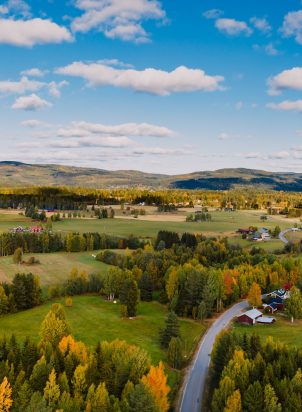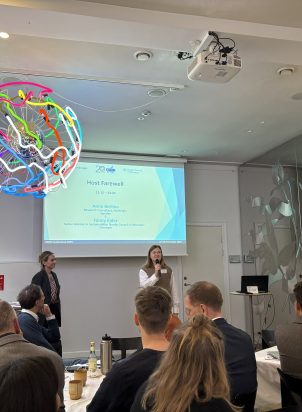The Hedmark-Dalarna Border Committee recently published a cross-boundary statistical report containing data, text and visualisations produced by Nordregio.
On behalf of the Hedmark-Dalarna Border Committee, Nordregio produced the material for a statistical report on the development within the two regions of Hedmark in Norway and Dalarna in Sweden. The Hedmark-Dalarna Border Committee is a cross-boundary association that consists of the county administrative boards of the Hedmark and Dalarna and aims at improving cooperation between, and development within Hedmark and Dalarna Border Region. Hedmark and Dalarna share a 200 kilometers stretch of the Swedish-Norwegian national boundary.

Map: Hedmark-Dalarna Border Region (yellow lines)
Nordregio assisted the Border Committee with visualising statistical material of Dalarna and Hedmark into maps, charts and tables, as well as written analysis. The statistical report includes an introductory chapter with basic short facts on the geography of the border region. This is followed by presentation of the statistical data, consisting of four main themes: Population, Labour market and economy, Quality of life and tourism, and Infrastructure and communication. In total, the statistical report contains 41 maps, charts and tables.
Large distances but a thriving tourism industry
The main findings of the statistical report show both challenges and strengths of the region. Among the challenges within the Border Region of Hedmark-Dalarna are large distances and limited possibilities for commuting across the sparsely populated, mountainous border zone. Hedmark and Dalarna have an ageing population – both regions have a bigger proportion of persons aged 55 years or older than the respective national averages. Among the assets within the Border Region is a highly popular tourism industry, centered around the winter ski resorts of Trysil and Sälen, with in total 6 million hotel overnight stays in 2012.
The statistical report provides a knowledge basis for future planning and development work for the Border Region. The report is directed both towards actors within regional planning in Hedmark and Dalarna, such as regional authorities and municipalities, but also industry and commerce as well as citizens that take interest in the statistical material.
The data harmonisation challenge
The most challenging part of presenting statistical data for regions in different countries is the compilation of comparable data, or, if needed, the harmonisation of data that was originally produced within each country’s statistical system. Such harmonisation aims at achieving comparable data that carries a common statistical definition without being influenced by different countries’ statistical traditions, and was carried out for a large part of the material presented in the report. In order to highlight this challenge, and present the solutions, a separate chapter was included in the statistical report that discusses the different methods used, and the issues encountered when harmonising the regional data of Norway (Hedmark) and Sweden (Dalarna). Harmonisation of data from different national sources and presenting such data is one of Nordregio’s specialities.
The Hedmark-Dalarna statistical report was published in February 2014 and is available for download.






